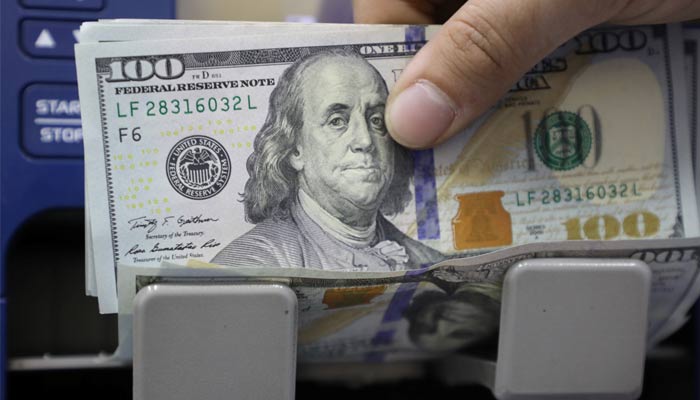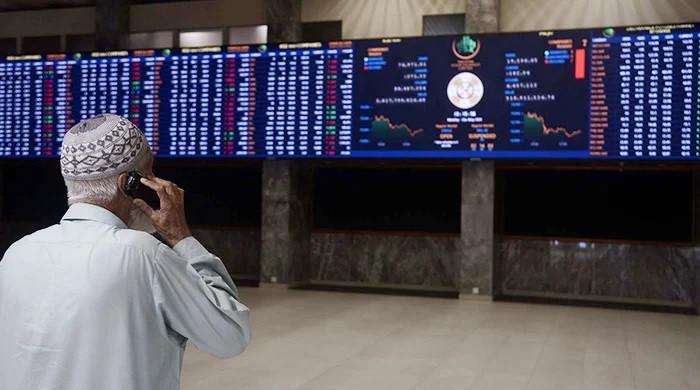Pakistan's foreign remittances register decline in November 2021
The country's remittances witnessed a negative growth at $2.35 bn in November 2021 against $2.51 bn in October 2021
December 23, 2021

- Pakistan's foreign remittances decline by 6.6% in November 2021.
- Pakistan's remittances report negative growth at $2.35 billion in November 2021 against $2.51 billion in October 2021.
- Increased remittances that had peaked at over $29 billion in the last fiscal year had rescued Pakistan from plunging into a Balance of Payment (BoP) crisis.
Pakistan's foreign remittances declined by 6.6% during November 2021, as per a report in The News, as the country's exchange rate also continues to persistently decline against the US dollar over the past couple of months.
Despite claims by Pakistan’s economic managers that the exchange rate would move in two ways, the rupee is persistently on the decline against the dollar. The rupee got depreciated from Rs152 against the dollar to Rs180 in the last few months.
The country's remittances witnessed a negative growth at $2.35 billion in November 2021 against $2.51 billion in October 2021.
Turkey’s Lira has achieved a substantial comeback overnight at a time when President Erdogan revealed a new financial mechanism to shore up the dwindling currency. In less than 24 hours, Turkey’s Lira has gained more than 30% against the US dollar, making the largest increase since 1983, it was reported by Turkey’s media outlet TRT World.
On Tuesday morning, the Lira/dollar exchange rate dropped to 11.2248 as of 9.30 local time (0630GMT), after it gained almost 40% against the dollar since Monday evening.
Turkey’s President Tayyip Erdogan on Monday said the new instrument would allow potential investors in foreign currencies to get the same results while sticking to the Lira. Erdogan said the series of steps will ease burdens from a currency crash over the last few weeks and encourage the Turks to hold Lira savings rather than dollars.
The fresh measures come in the wake of rising prices and exchange rates as the government pursues its "new economic model," which emphasizes opposition to high interest.
However, in the case of Pakistan, the country had fetched remittances to the tune of $29.4 billion in the fiscal year 2020-21 against $23.3 billion in previous fiscal 2019-20, indicating that the county got additional remittances of around $6 billion in the wake of COVID-19 pandemic.
But if the remittances dropped significantly because of the widening gap between the interbank rate and open market rate, then the incentives for Hundi/Hawala might increase manifold.
The increased remittances that had peaked at over $29 billion in the last fiscal year had rescued Pakistan from plunging into a Balance of Payment (BoP) crisis in a big way. These remittances witnessed a massive surge in the aftermath of COVID-19 pandemic when there were restrictions on traveling abroad. So overseas Pakistanis, especially those living in Europe, sent back their savings and rescued the country from facing any serious crisis.
The country’s remittances fell by 6.6% in November 2021 but they grew by almost 10% in the first five-month (July-Nov) period of the current fiscal year. During the July-November period of 2021-22, the remittances went up by 9.7% to $12.9 bn against $11.7 bn in the same period of FY21. The remittances from European countries rose sharply to 41% to $1.442 bn in five months of FY22 against $1.02 bn in the same period of the last fiscal year.
Now there is a challenge lying ahead as the current account deficit had already crossed $7.1 billion for the five-month (July-Nov) period of the current fiscal year mainly because of rising imports at an accelerated pace. The current account deficit has been widening; it stood at $1.7 billion in October 2021 but it went up to $1.9 billion in November 2021. The Current Account Deficit stood at $773m in July, $1.473 bn in August, $1.113 bn in September, $1.76 bn in October and $1.908 bn in November 2021.
The SBP has been forced to revise upward its projection for the current account deficit from 2-3% of GDP to 4% of the GDP.
Mohammad Sohail, Topline Security analyst, when contacted, told The News that volatility and rising spread between official and open market may affect inward remittances. In fact, the open market has two rates now. Rate without documentation is even higher, he said. When asked how much it could affect remittances in the current fiscal, he said that it would be difficult to say but in the past when we have seen a higher spread between official and open market rates,it resulted in remittances coming through unofficial channels.
Fahad Rauf, Head of Research, Ismail Iqbal Securities, said that the country received over $29 billion remittances mainly because of the COVID-19 pandemic owing to travel restrictions and now it was hoped that the country might receive remittances to the tune of $27-$28 billion during the current fiscal year.
He said that Bangladesh made corrections for receiving remittances where the remittances also witnessed a declining trend from November 2021 compared to October 2021. Fauf said that the SBP received around $3 billion into the Roshan Digital Accounts, so it was providing other avenues to overseas Pakistanis for investing their money. He said that it was surprising that the remittances were diversifying as the country received substantial remittances from the EU.
Tahir Abbas, Arif Habib Securities analyst, said that some strict measures were also underway against Hundi/Hawala and there were different factors behind declining trends in receiving remittances in November 2021. He said that Pakistan could receive remittances to the tune of $30 billion during the current fiscal year, however, there was a continuous requirement to remain vigilant for avoiding diversion of remittances towards nonofficial channels.
Originally published in The News











